The terrifying winged, fire breathing dragon has fascinated cultures across the world for millennia. This mythical creature has featured in stories for over four thousand years. Dragons are seen as symbols of strength and power. In the western world dragons are generally fierce treasure hoarders, while in the eastern world they have a wise persona.
Dragons are found across the world, from symbols of the God Marduk in Ancient Babylon to decoration at Reading's medieval abbey. Stories of dragons may have been fuelled by the discoveries of fossils that were mistaken for these mythical creatures over the centuries.
Inspired by our ANIMAL - World Art Journeys exhibition, discover the dragons that lurk in Reading Museum!
Chinese robe dragon
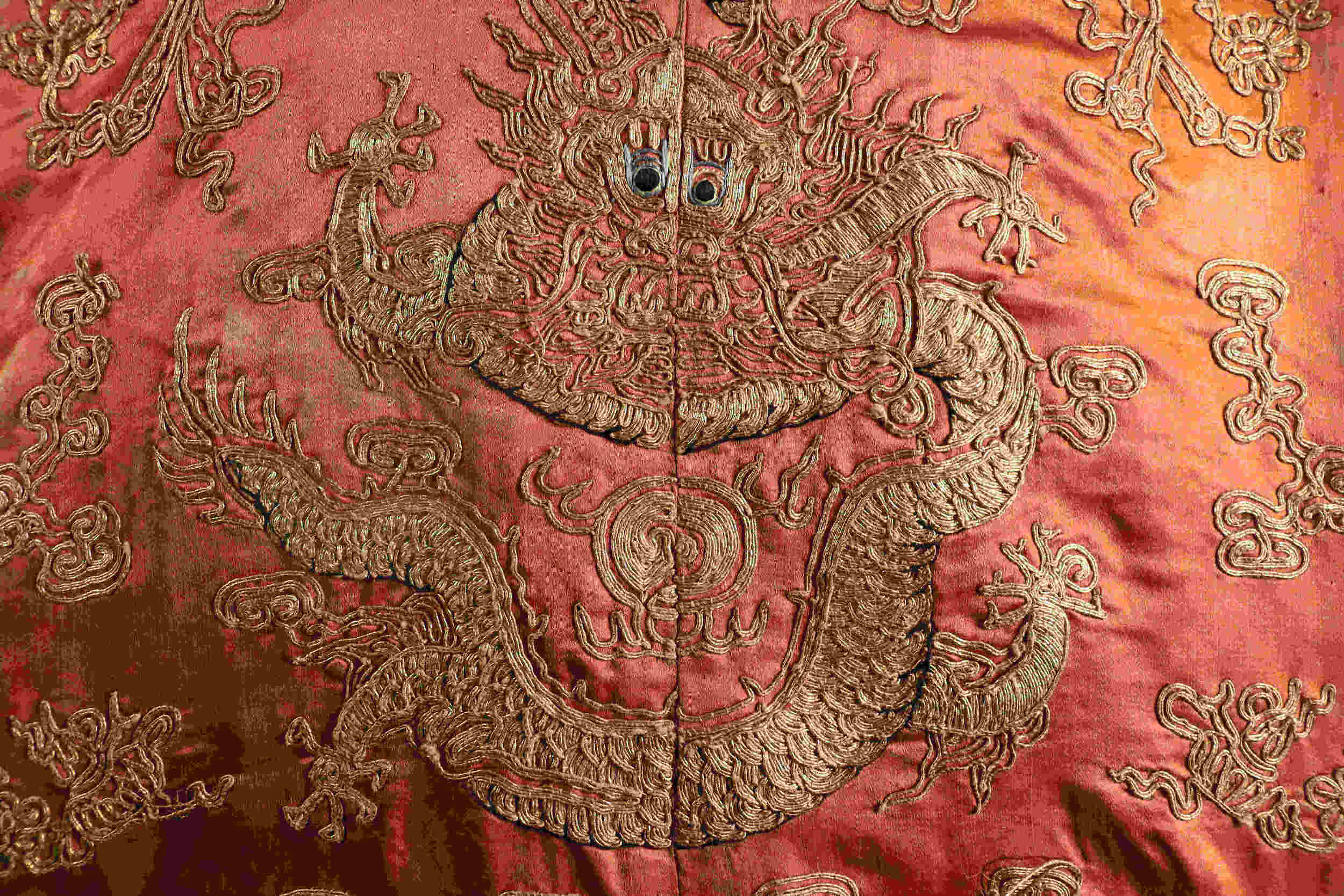
The dragon on a 19th century Chinese jacket
Eastern dragons are wise and intelligent and served as the emblem of Imperial China. This robe is thought to be a 'Mang ao', a red jacket embroidered with gold dragons. It was worn at weddings and official ceremonies by the wife of a high ranking Qing Dynasty official in the second half of the 19th century.
Buddhist incense burner dragon
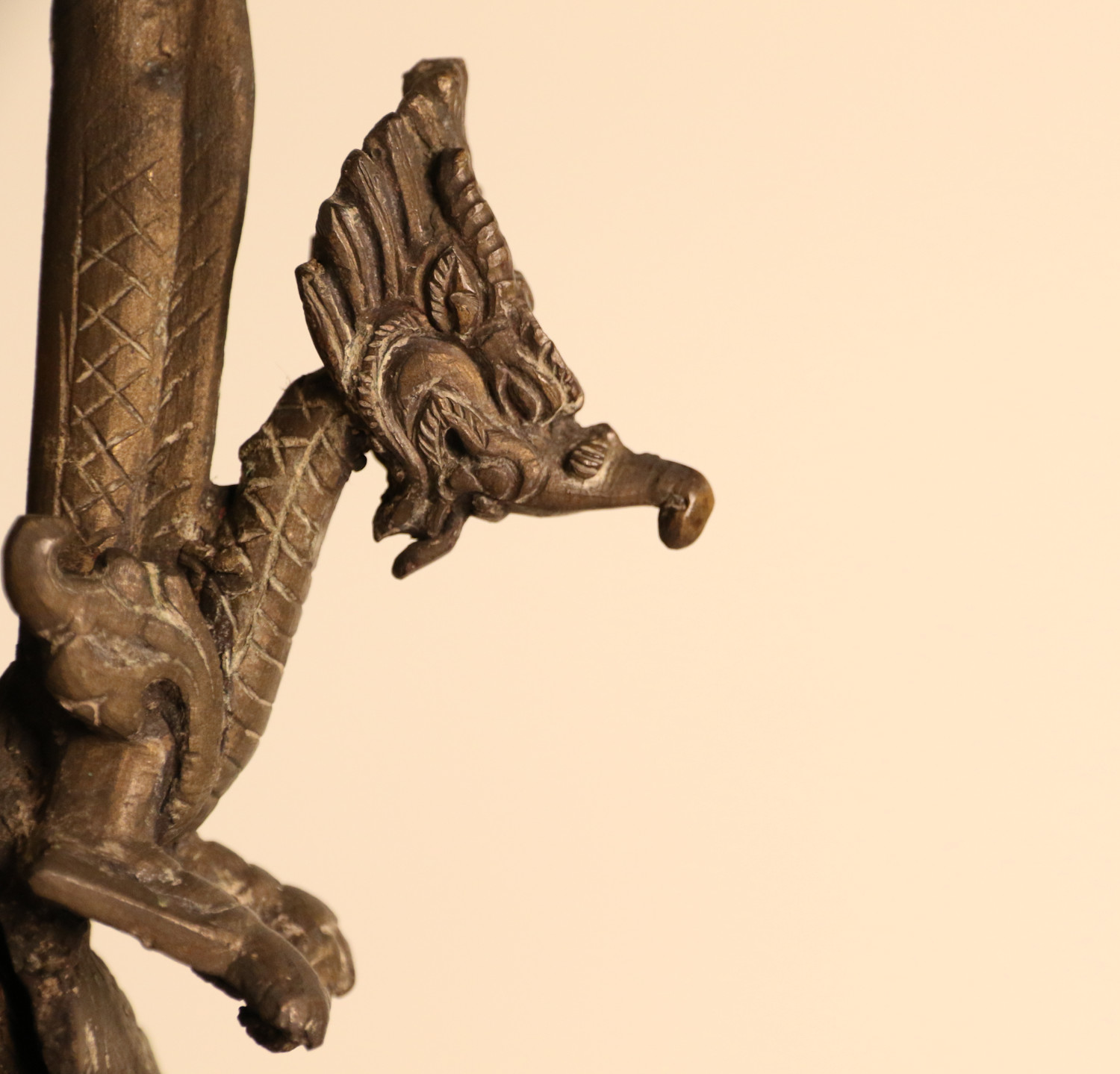
Dragon on a Buddhist temple incense burner
This bronze incense burner was from a Tibetan or Nepalese temple. It was used to create a purifying or welcoming fragrant smoke in Buddhist rituals. This was part of a collection acquired by General Younghusband during his controversial expedition to Lhasa, Tibet in 1904. General Younghusband was British Commissioner to Tibet from 1902-1904.
Chinese plaque dragon
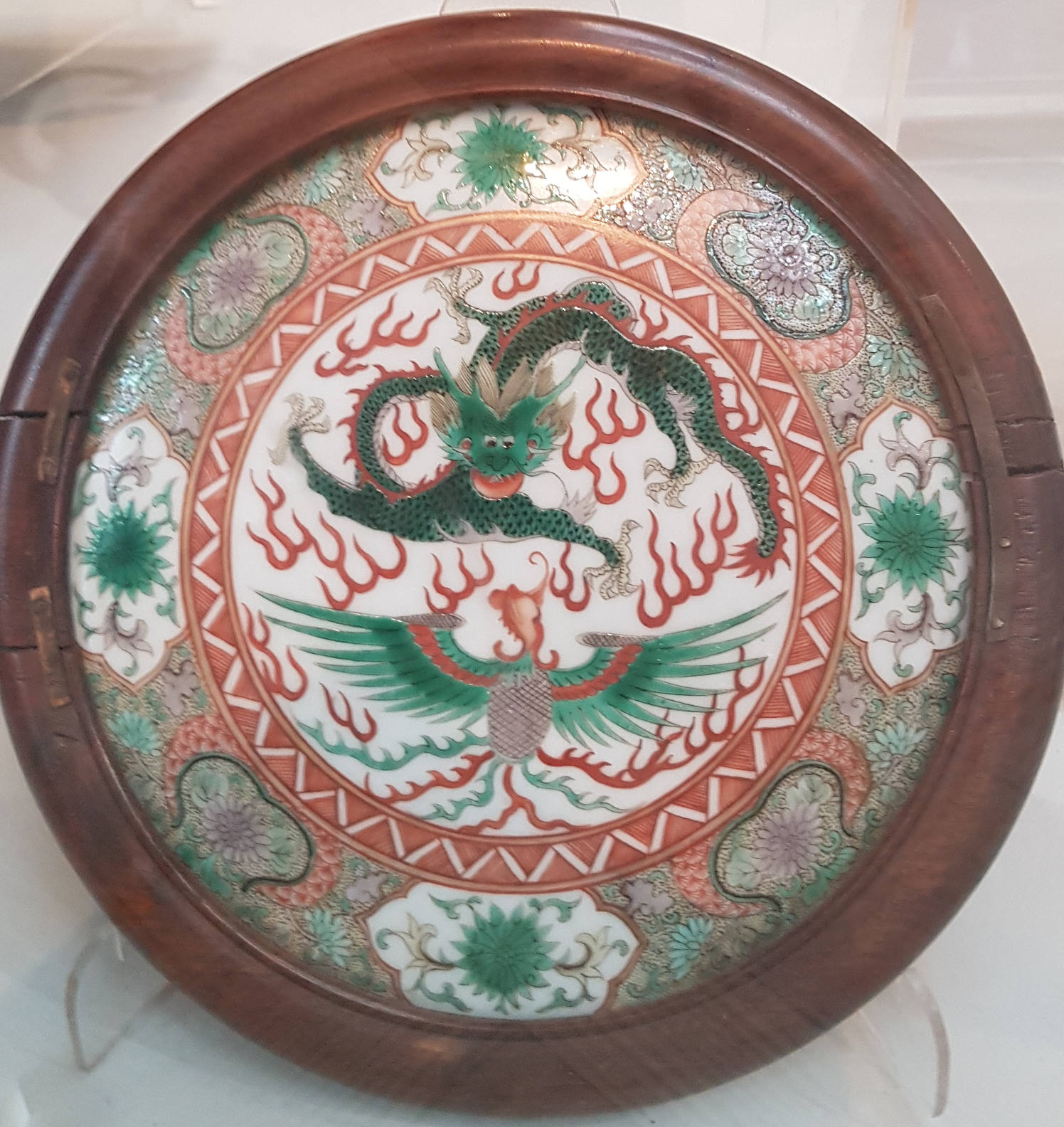
Chinese porcelain plaque with a dragon and phoenix surrounded by flames
This Chinese porcelain plaque depicts a dragon and phoenix surrounded by flames in an enamel decoration called 'famille verte' because of the dominance of dark green. This dates as early as the late seventeenth century. These plaques were very popular with western collectors, this panel was treasured by a collector who framed it.
Royal Berkshire Regiment dragon
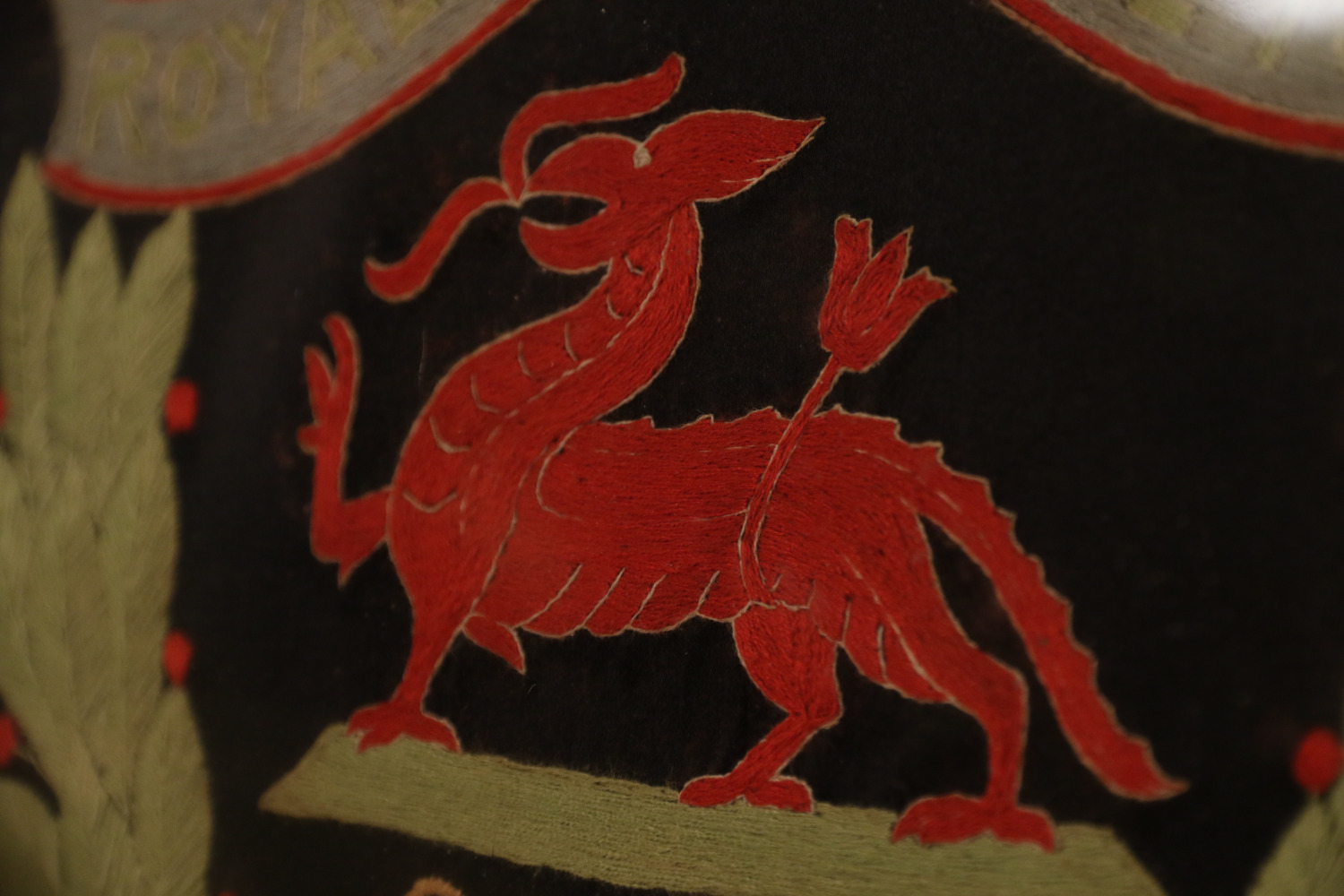
The Royal Berkshire Regiment (1885-1959) emblem
The emblem of the Royal Berkshire Regiment (1885-1959) was the ‘China Dragon’. It was granted to its forerunner the 49th Princess of Wales (Hertfordshire) Regiment of Foot. The 49th gained this distinction for its role in the Opium Wars of 1840-42 in China. The Regiment fought in conflicts across the world and saw service on several fronts during the First and Second World Wars.
The Bayeux Tapestry dragons
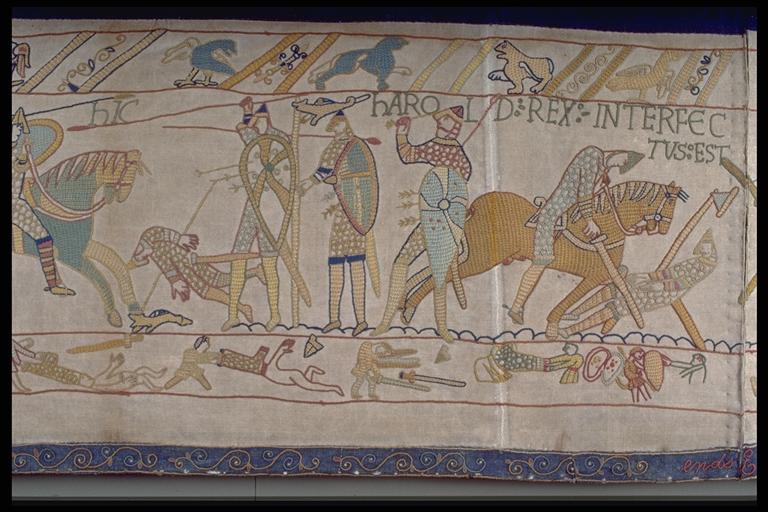
Dragons and Wyverns on Bayeux Tapestry
Dragons and Wyverns feature throughout the borders of Reading's Victorian Bayeux Tapestry. At the feet of the dying King Harold lies the great Dragon banner of Wessex, the royal Anglo-Saxon banner that was carried into the Battle of Hastings in 1066.
Saint George and the dragon
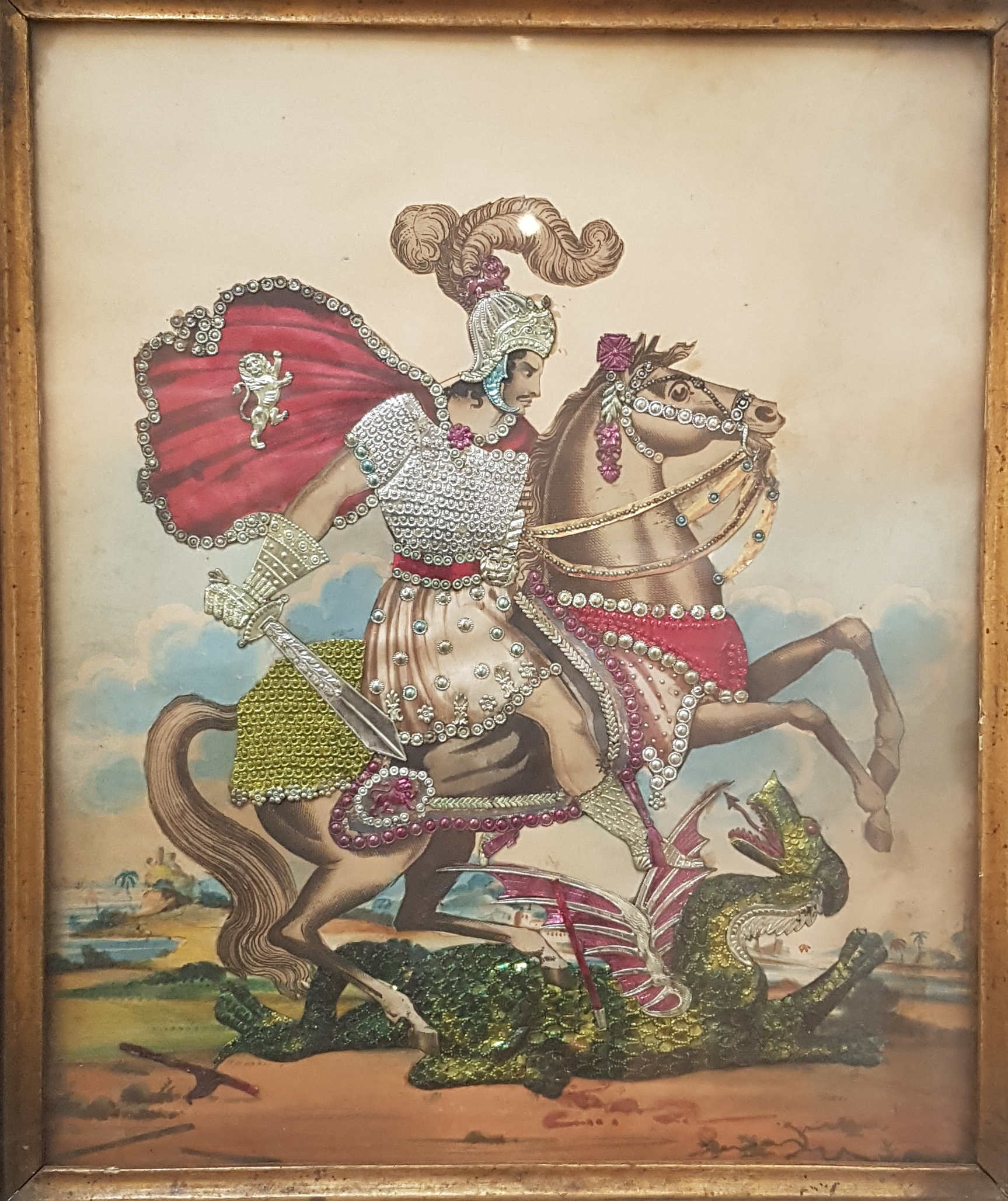
Saint George and the dragon Victorian tinsel print
In western art dragons are often associated with the story of Saint George slaying the dragon. This was a recreated in Victorian plays and grand pageants. This tinsel print portrays an actor as Saint George. Tinsel prints were a brief craze. Victorians bought tinsel print kits with an engraving to colour, sequins and embossed decorations to individualise each picture.
Reading Abbey Wyvern
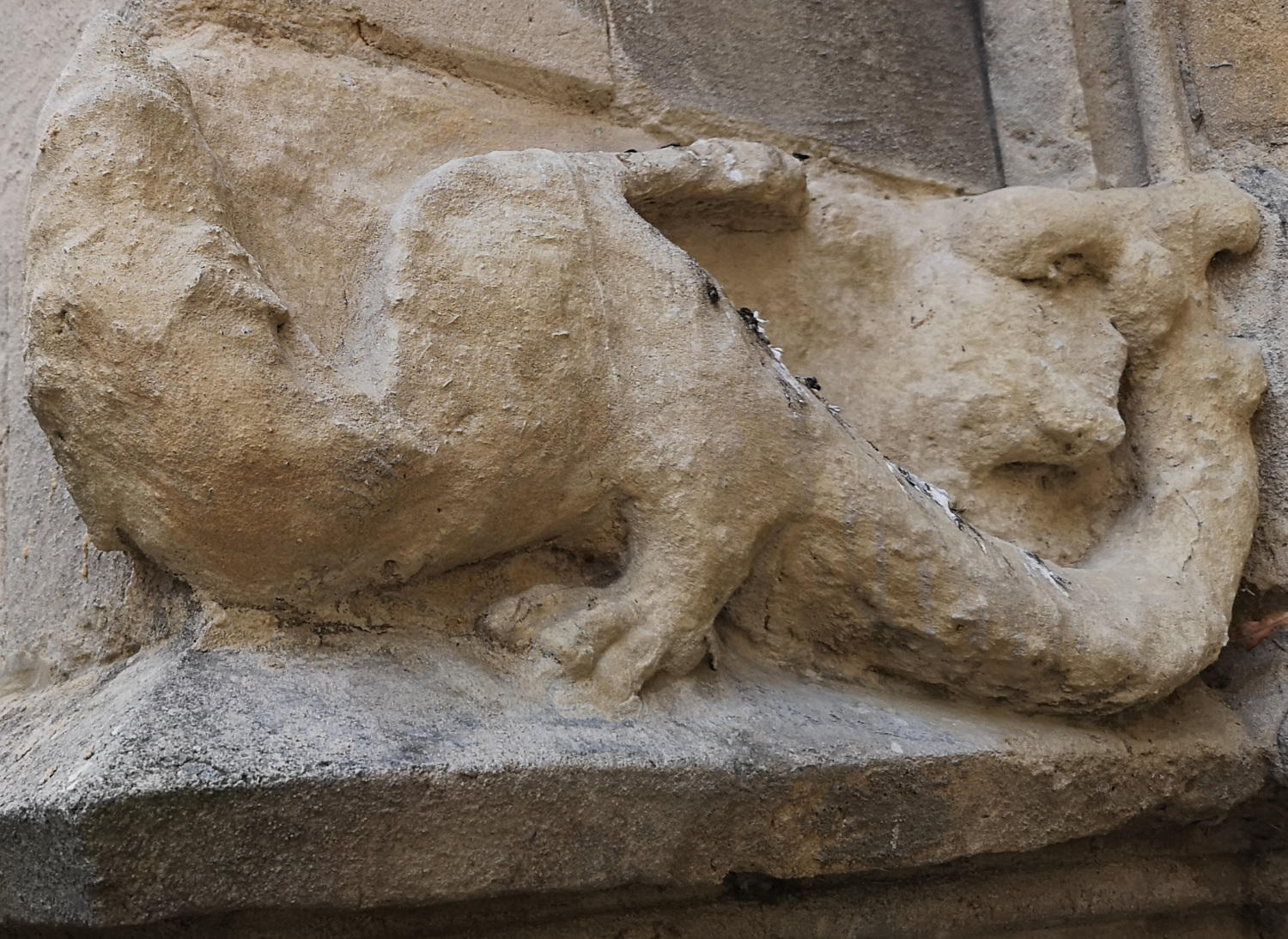
Wyvern (a two legged dragon) on the Reading Abbey Gateway
The remains of two, strictly speaking, Wyverns (two legged dragons) adorn the Reading Abbey Gateway. This building welcomed visitors to the private quarters of Reading Abbey and dates from 1250, and was restoration in the 19th century. Dragon capitals that decorated the cloister also survive from Reading Abbey.
Venetian glass dragon

Venetian glass bow with dragon
This fierce dragon clinging onto the glass bowl is a fine example of flamboyant Venetian glass. Handmade by Murano & Co in the late 19th and sold in London, Venetian glass was made popular by the patronage of Queen Victoria. Venetian glass became world famous as a luxury in the 17th century, the designs and methods of production changed little over the centuries.
Fireman's helmet

A Merryweather brass fireman's helmet
Fire breathing dragons were popular on 19th and 20th century fireman’s helmets across the British Empire. This is a Merryweather helmet, produced for firemen across the country. It was based on Napoleonic cuirassier helmets (French heavy cavalry). Brass helmets sporting fearsome dragons were introduced by the Metropolitan Fire Brigade in the 1860s and spread across Britain, until their replacement in the mid 1930s due to the increased risk of electrocution.
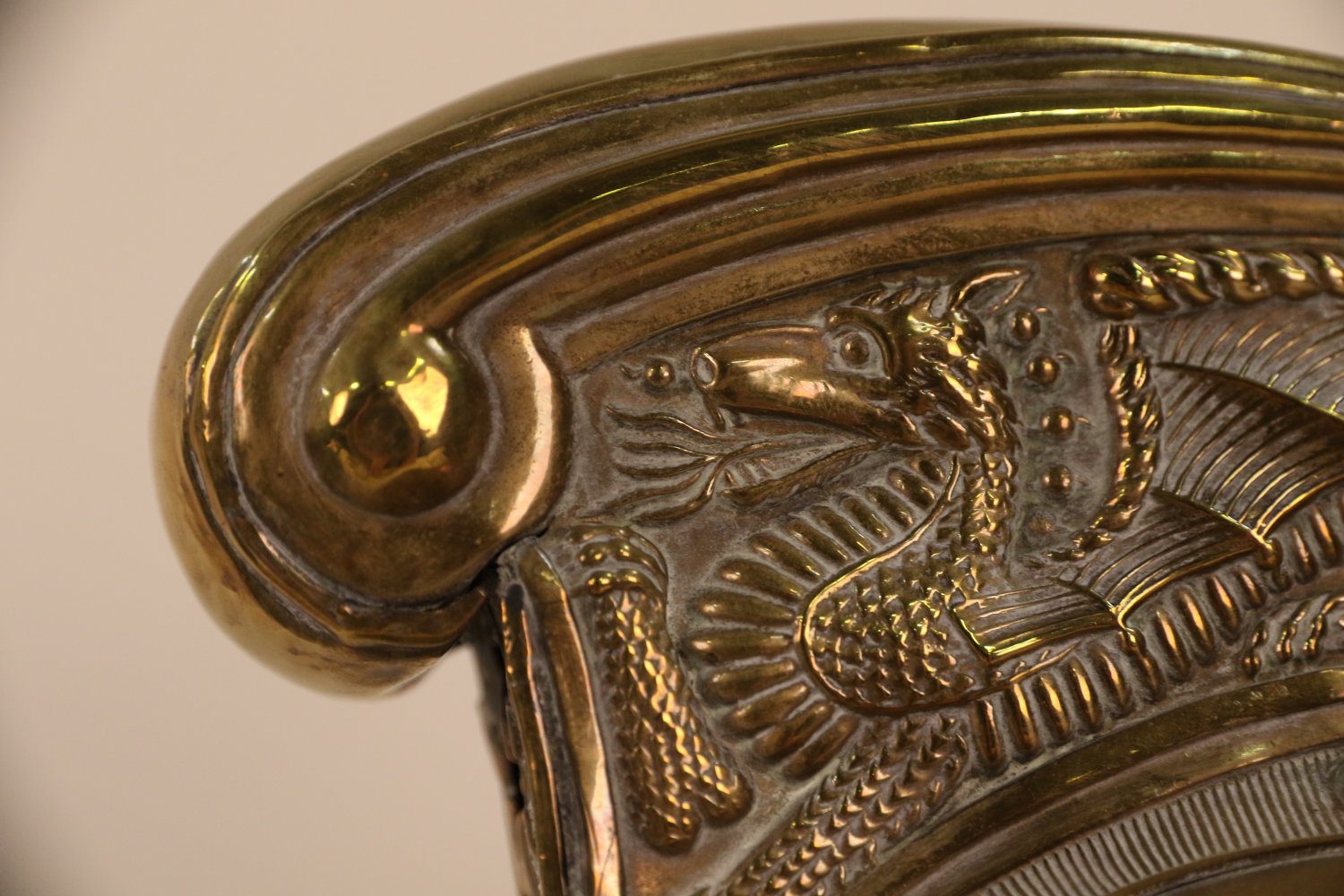
A close-up of the dragon on the fireman's helmet
Japanese temple bell
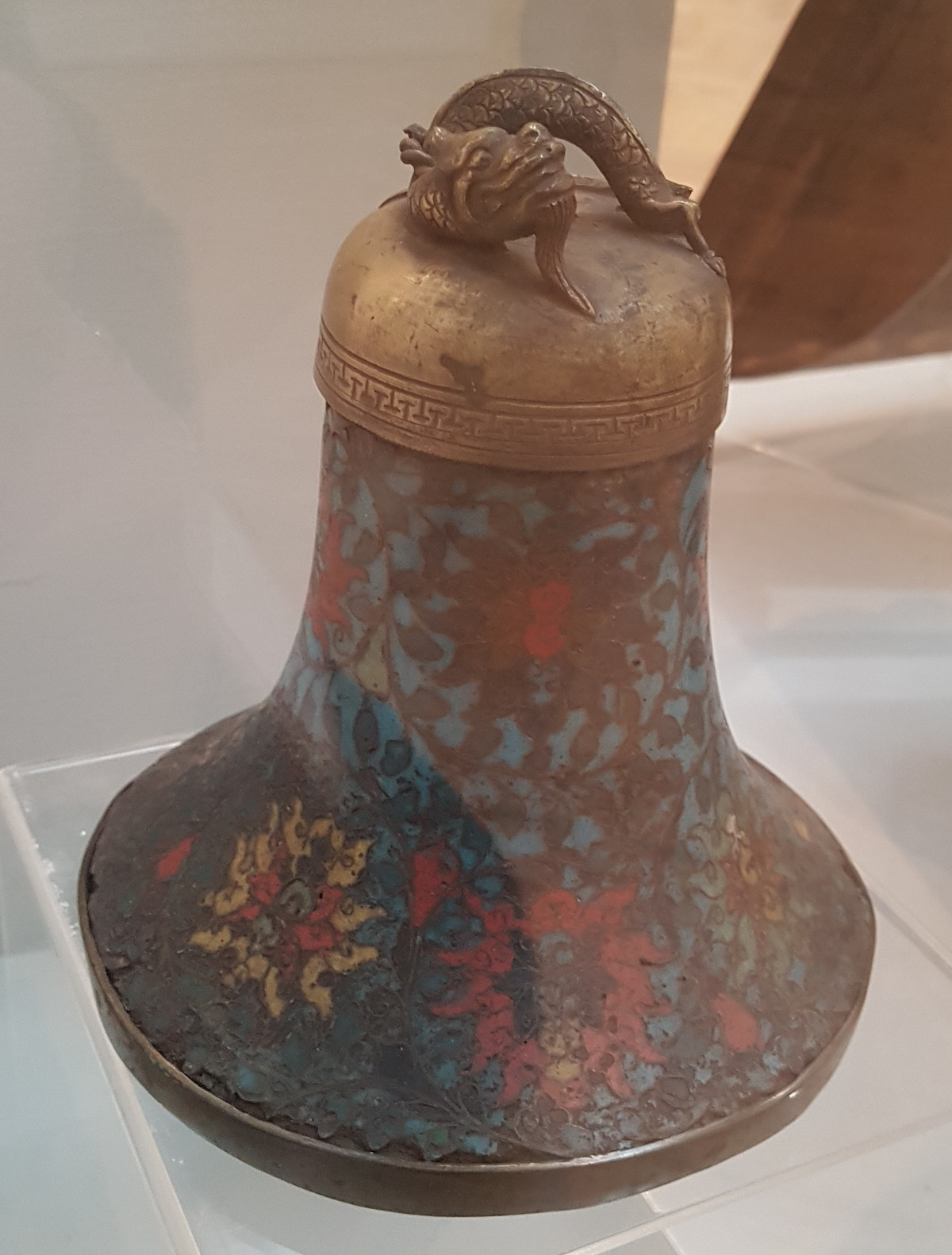
Japanese temple bell decorated with cloissonne enamel
This is a bronze and enamel Japanese temple bell decorated with cloissonne enamel, a traditional, complicated and time-consuming technique. It was one of a number of Japanese objects bought by the Museum from Liberty & Co in 1884 when it was collecting examples of high quality arts and crafts from around the world.
Japanese Okimono dragon
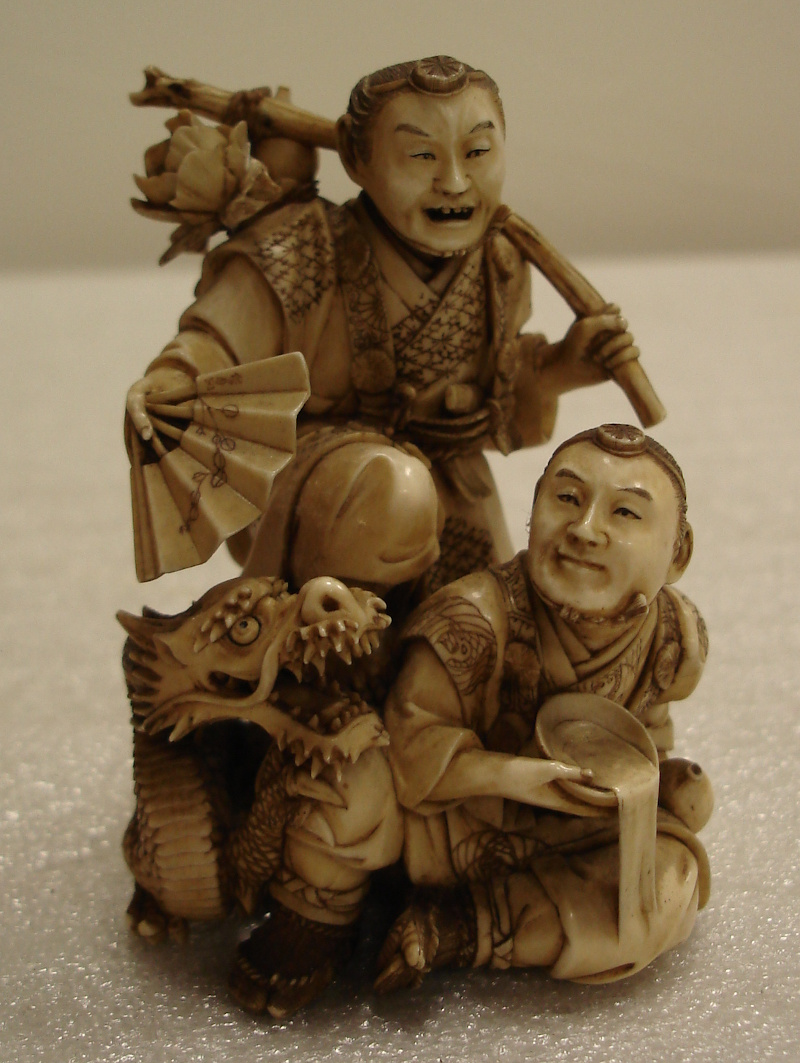
Japanese ivory Okimono with a dragon
This 19th century ivory Okimono from Japan was carved with two humans and a dragon, probably representing a scene from a story. In the 1860s Japan opened its doors to the world after 200 years of isolation. By the 1880s all things Japanese were viewed as exotic and highly fashionable. An Okimono is an ornament for display in an alcove or on a house altar.





